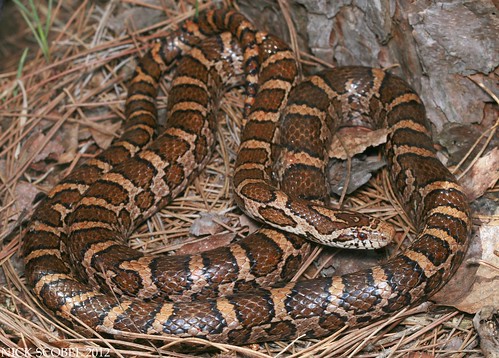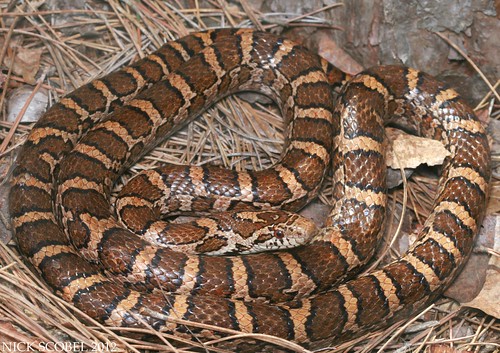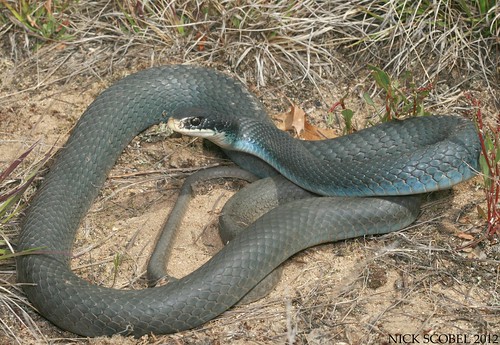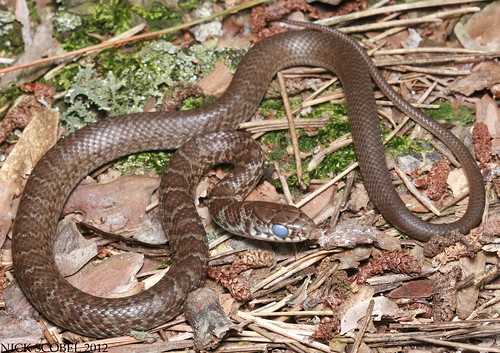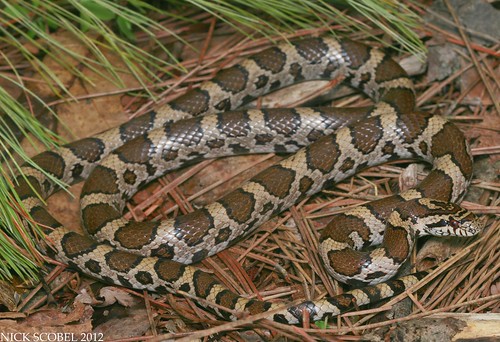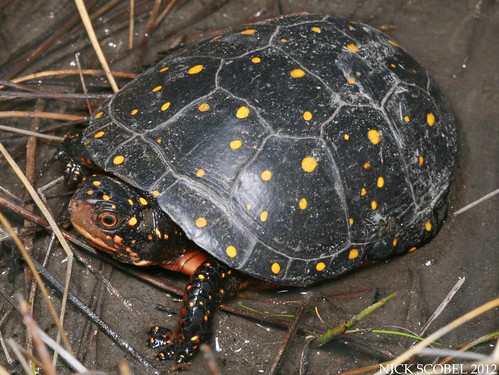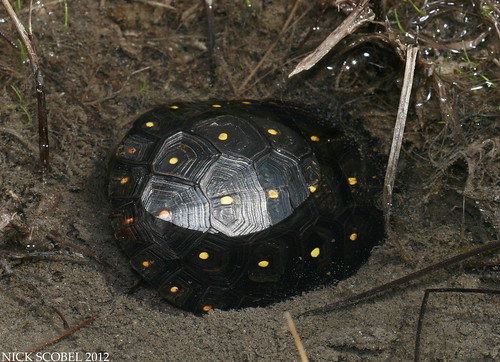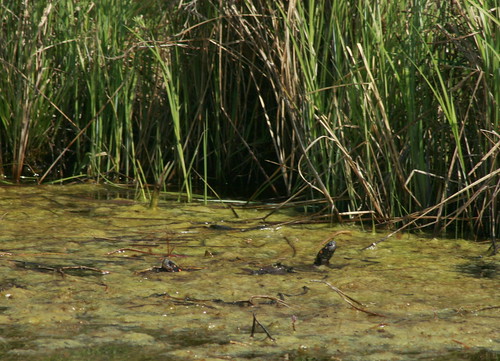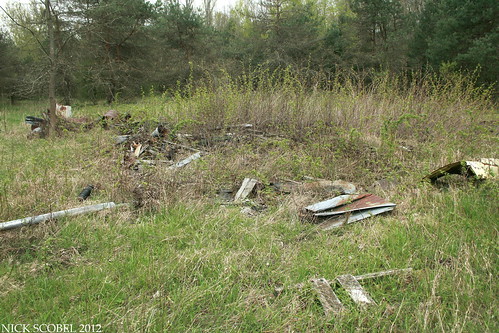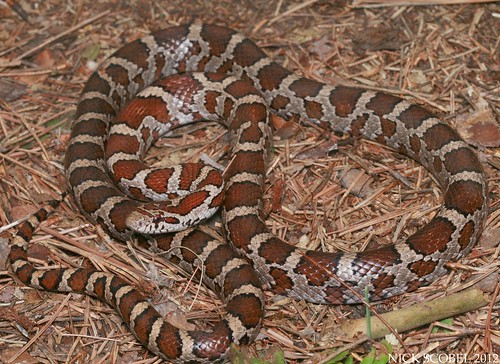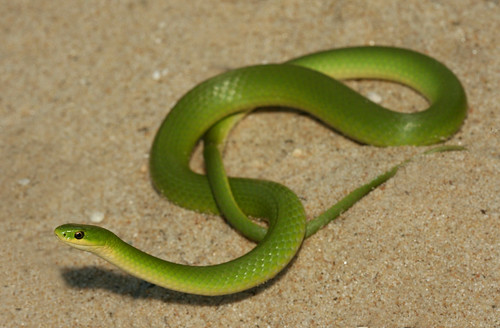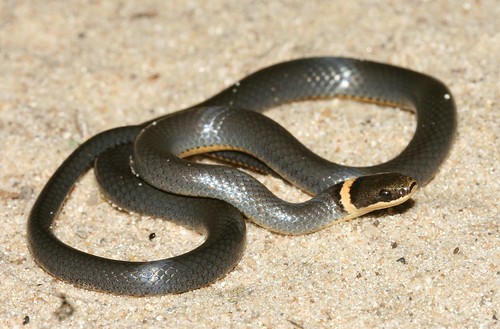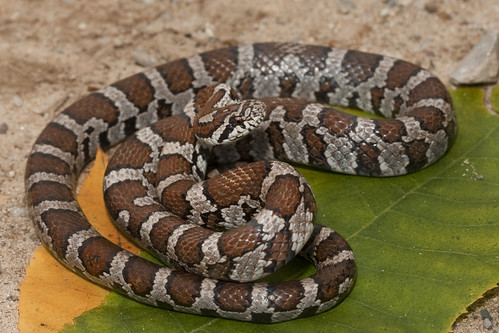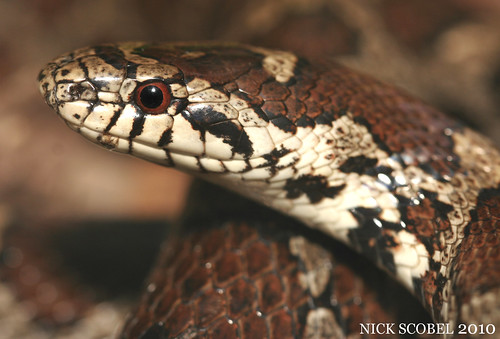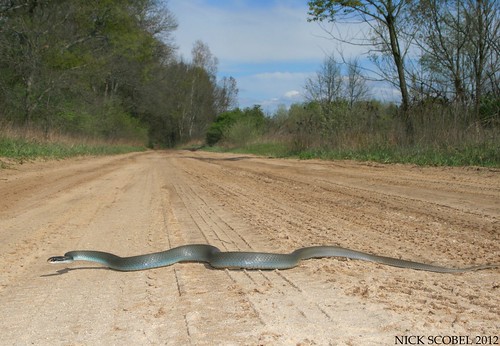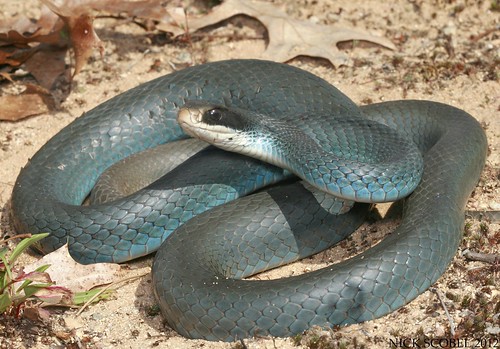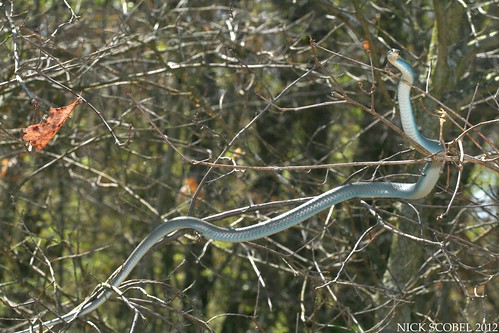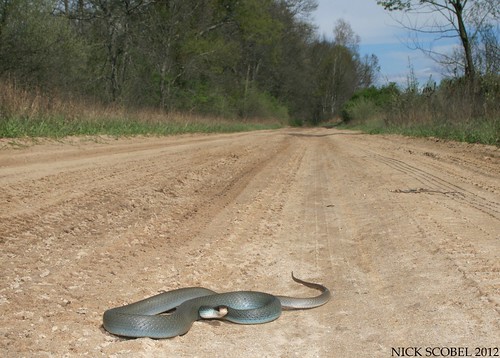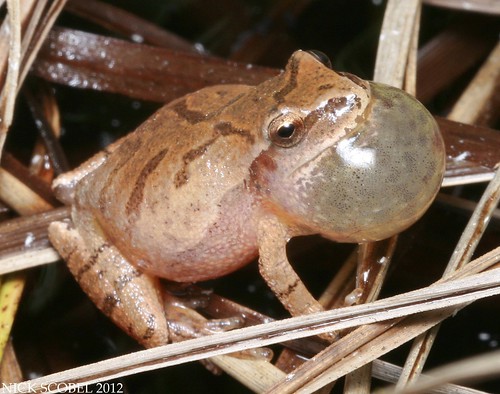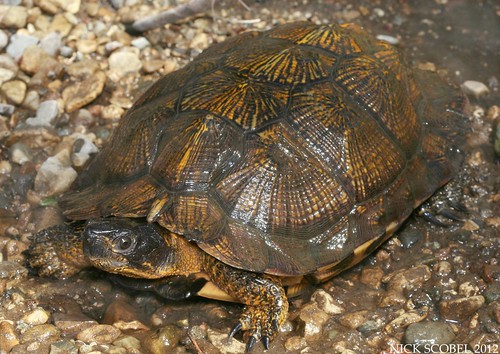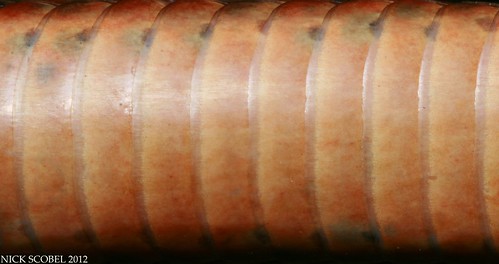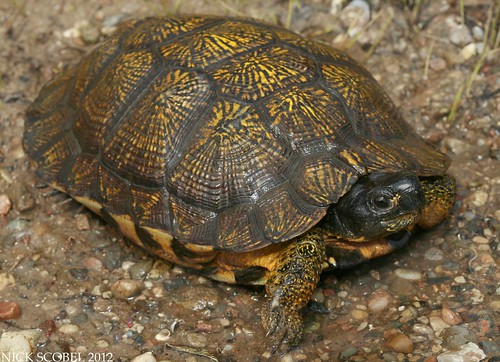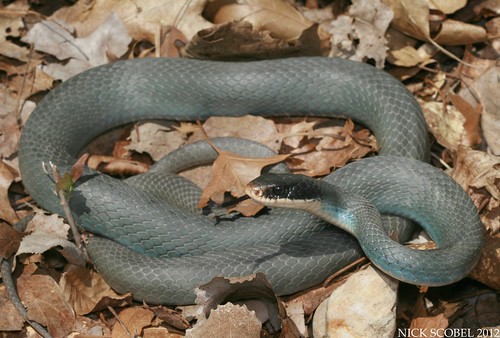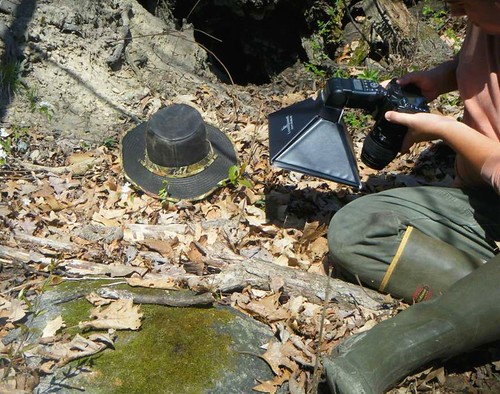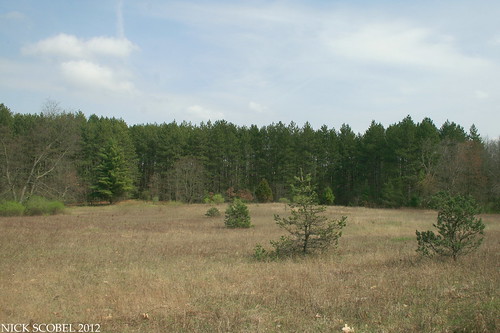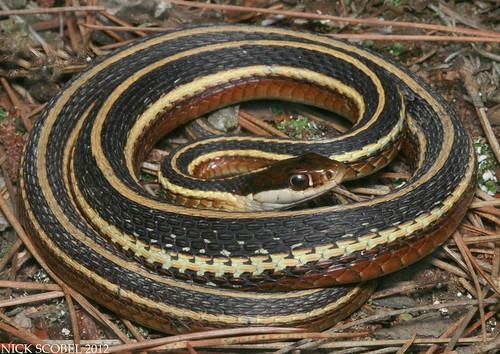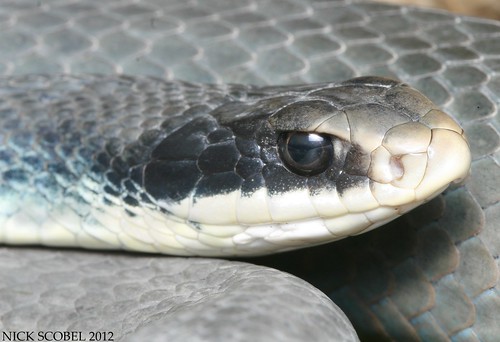Eastern Milk Snake - Lampropeltis triangulum triangulum
An absolutely stunning snake in my opinion, this is by far the largest individual of this species I've ever seen and I would guess it was pushing the 36" mark. Its large size and coloration made it a pleasure to photograph, though I can't decide which of these two photos I like more, opinions? I parted ways with the beast and did not get back out until the weekend when Chris & Matt Boguslawski swung up north on Sunday for a day in the field. We swung a bit south of CMU and hit up an area I frequent on a regular basis in hopes of seeing some Blue Racers. Less than five minutes is all it took to get our first of 6 in less than an hour.
Blue Racer - Coluber constrictor foxii
This large adult required quite a chase from Matt & I. At well over four and half feet in length, blues in this size range are always fun to photograph due to their testy disposition. We saw several others in the next hour, but the best find at this site was when Chris flipped this juvenile under a random Hank Williams Jr. CD cover in the middle of an open field, you couldn't make that up if you tried.
Blue Racer - Coluber constrictor foxii
Most of you will recognize this snake as a juvenile racer. But some of you may wonder, why isn't it blue? Racers are born to be gray or brown with patterning, which eventually changes as they age. Because they are not as large and fast adults, they have evolved this strategy to help conceal young snakes from predators until they are old enough to escape quickly. We stumbled across a few more racers and then headed back towards CMU to flip some tin. It paid off for the boys as we flipped a few of these beauties.
The guys were pretty excited to see these two snakes, as they hadn't seen one in Michigan for awhile just like me up until recently. We also saw a few garters snakes and that was it. We swung out to another area as the sun was going down in hopes of finding my first skink of the year, luckily this lone juvenile was found under a coverboard at about 7:00 PM.
Five-lined Skink - Plestiodon fasciatus
It was a great day with the guys and we enjoyed a nice burger at Jon's Drive In here in Mount Pleasant after a long field day. I'm glad they could make it up and would like to wish Matt a happy 21st birthday. That's all for now, stay tuned as Herping with Dylan comes to Michigan next week!

